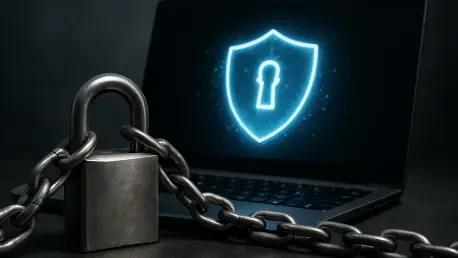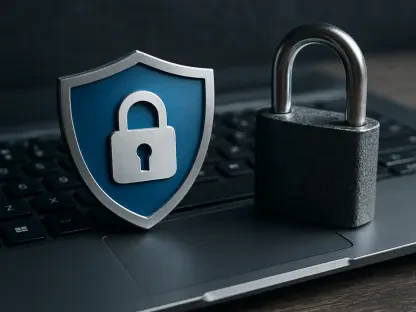Imagine a major corporation facing a devastating data breach, costing millions in damages and eroding customer trust overnight, all because the security team couldn’t convey the urgency of a critical vulnerability to the executive board. This scenario underscores a pervasive challenge in modern organizations: the communication gap between technical cybersecurity experts and business leaders. In an era where cyber threats are increasingly sophisticated, aligning these two groups is not just beneficial but essential for organizational survival. This technology review delves into the strategies and principles of cybersecurity leadership communication, exploring how expertise can bridge this divide, integrate security into business strategy, and foster a culture of shared responsibility.
Core Features of Effective Cybersecurity Communication
Translating Technical Risks into Business Impacts
A pivotal aspect of cybersecurity leadership communication lies in transforming complex technical jargon into terms that resonate with business executives. By quantifying risks in financial metrics, such as potential losses from a breach, or highlighting customer impact, security leaders can create a common language that drives decision-making. This data-driven approach ensures that the C-suite understands the tangible consequences of inaction, making security a priority rather than an abstract concern.
Beyond mere translation, this strategy involves presenting actionable insights that tie directly to organizational goals. For instance, demonstrating how a specific vulnerability could delay product launches or damage brand reputation helps executives see security as a business enabler. This method shifts the perception from viewing security as a cost center to recognizing it as a strategic asset, fostering alignment across departments.
Leadership with Dual Expertise
Another critical feature is the role of leaders who possess both cybersecurity knowledge and business acumen. Such individuals can navigate the intricacies of technical challenges while advocating for necessary investments at the executive level. Their ability to straddle both worlds ensures that security initiatives are not only technically sound but also aligned with broader business objectives.
This dual expertise also empowers leaders to guide engineering teams with clarity, prioritizing secure practices without compromising on innovation. By acting as intermediaries, they facilitate a seamless flow of information, ensuring that technical requirements are understood by business stakeholders and vice versa. This balance is indispensable in maintaining organizational focus on security as a core value.
Performance in Real-World Applications
Embedding Security in Product Development
One of the standout performances of cybersecurity leadership communication is its impact on product development through the principle of secure by design. Integrating security from the inception of a product lifecycle not only enhances quality but also prevents costly vulnerabilities that might emerge later. This proactive stance counters the misconception that security stifles innovation, instead proving that it accelerates time to market by reducing rework.
In practice, this approach manifests through specific guidelines provided to engineering teams, such as secure coding practices and defined acceptance criteria. When developers receive clear, actionable instructions, they are empowered to make informed decisions, viewing security as an integral part of their workflow rather than an external mandate. This integration has shown measurable results in reducing incident rates across various industries.
Securing Executive Buy-In and Business Outcomes
The real-world impact of effective communication is also evident in securing executive support for security initiatives. By framing security in terms of cost-avoidance, faster development cycles, and competitive advantage, leaders have successfully garnered the necessary resources and attention. Case studies reveal instances where such strategies led to significant savings by preventing breaches before they occurred.
Moreover, this focus on business outcomes builds customer trust, as secure products become a hallmark of reliability. Organizations that prioritize this communication strategy often gain a market edge, positioning themselves as leaders in a threat-laden digital landscape. The ripple effect of these efforts is seen in enhanced stakeholder confidence and long-term organizational resilience.
Challenges and Mitigation Strategies
Overcoming Communication Barriers
Despite its strengths, cybersecurity leadership communication faces persistent challenges, particularly in aligning technical and business perspectives. The use of dense technical terminology often alienates non-technical stakeholders, leading to misaligned priorities and underfunded initiatives. Cultural resistance within organizations can further exacerbate this divide, as some departments may view security as a hindrance to their primary objectives.
To address these barriers, ongoing education and training programs are essential. By demystifying cybersecurity concepts for executives and fostering a security-first mindset among all employees, organizations can break down silos. Regular workshops and simulations help illustrate the real-world implications of cyber risks, making the need for investment and collaboration more apparent.
Resource Constraints and Advocacy Solutions
Resource limitations pose another hurdle, as security teams often struggle to secure adequate funding and personnel. This challenge is compounded when business leaders fail to grasp the urgency of proactive measures due to a lack of compelling communication. Without sufficient resources, even the best strategies can falter under the weight of evolving threats.
Mitigation lies in persistent advocacy at the executive level, where security leaders must continuously demonstrate the return on investment for security measures. Highlighting success stories and potential risks in relatable terms can shift perceptions, ensuring that resources are allocated where they are most needed. Building alliances with other departments also amplifies the voice of security, creating a unified front for change.
Final Thoughts on Cybersecurity Leadership Communication
Reflecting on the exploration of cybersecurity leadership communication, it is clear that this approach delivers transformative results in aligning technical expertise with business goals. The strategies of translating risks into business terms, leveraging dual-expertise leadership, and embedding security into product development proved effective in real-world scenarios. Despite challenges like communication barriers and resource constraints, the mitigation tactics of education and advocacy offer viable paths forward.
Looking ahead, organizations should focus on investing in tools that enhance cross-functional collaboration, ensuring seamless dialogue between teams. Establishing the role of strategic intermediaries, such as CISOs, will further solidify security’s place in business strategy. Additionally, cultivating a pervasive security culture through consistent training and recognition of secure practices promises to build lasting resilience against future threats.









